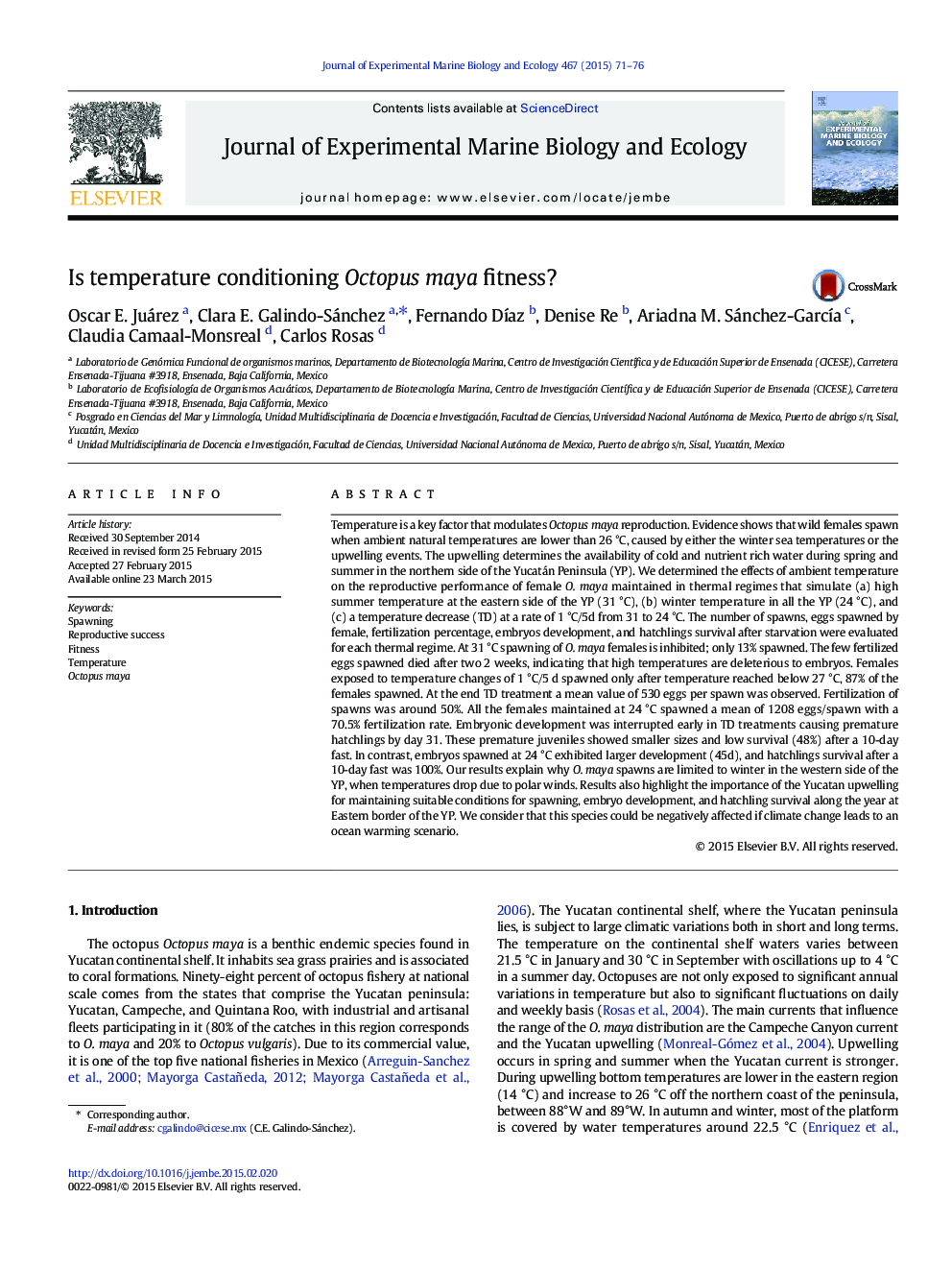| Article ID | Journal | Published Year | Pages | File Type |
|---|---|---|---|---|
| 4395385 | Journal of Experimental Marine Biology and Ecology | 2015 | 6 Pages |
Abstract
Temperature is a key factor that modulates Octopus maya reproduction. Evidence shows that wild females spawn when ambient natural temperatures are lower than 26 °C, caused by either the winter sea temperatures or the upwelling events. The upwelling determines the availability of cold and nutrient rich water during spring and summer in the northern side of the Yucatán Peninsula (YP). We determined the effects of ambient temperature on the reproductive performance of female O. maya maintained in thermal regimes that simulate (a) high summer temperature at the eastern side of the YP (31 °C), (b) winter temperature in all the YP (24 °C), and (c) a temperature decrease (TD) at a rate of 1 °C/5d from 31 to 24 °C. The number of spawns, eggs spawned by female, fertilization percentage, embryos development, and hatchlings survival after starvation were evaluated for each thermal regime. At 31 °C spawning of O. maya females is inhibited; only 13% spawned. The few fertilized eggs spawned died after two 2 weeks, indicating that high temperatures are deleterious to embryos. Females exposed to temperature changes of 1 °C/5 d spawned only after temperature reached below 27 °C, 87% of the females spawned. At the end TD treatment a mean value of 530 eggs per spawn was observed. Fertilization of spawns was around 50%. All the females maintained at 24 °C spawned a mean of 1208 eggs/spawn with a 70.5% fertilization rate. Embryonic development was interrupted early in TD treatments causing premature hatchlings by day 31. These premature juveniles showed smaller sizes and low survival (48%) after a 10-day fast. In contrast, embryos spawned at 24 °C exhibited larger development (45d), and hatchlings survival after a 10-day fast was 100%. Our results explain why O. maya spawns are limited to winter in the western side of the YP, when temperatures drop due to polar winds. Results also highlight the importance of the Yucatan upwelling for maintaining suitable conditions for spawning, embryo development, and hatchling survival along the year at Eastern border of the YP. We consider that this species could be negatively affected if climate change leads to an ocean warming scenario.
Related Topics
Life Sciences
Agricultural and Biological Sciences
Aquatic Science
Authors
Oscar E. Juárez, Clara E. Galindo-Sánchez, Fernando DÃaz, Denise Re, Ariadna M. Sánchez-GarcÃa, Claudia Camaal-Monsreal, Carlos Rosas,
